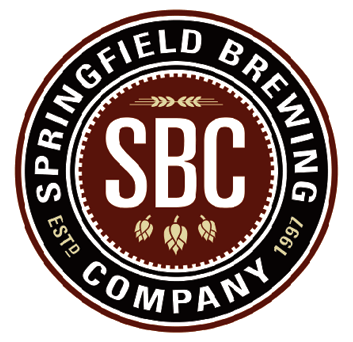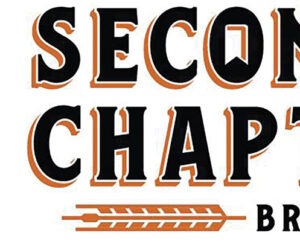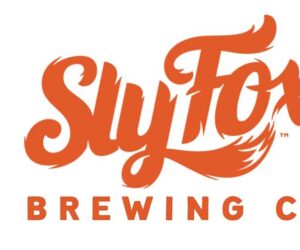Springfield Brewing Co.’s Aviator Doppelbock: Replicator
Dear Replicator,
On a recent road trip from Kansas City to southeastern Missouri I made a stop at Springfield Brewing Company. I had a couple of their beers, one being the Aviator Doppelbock. I have brewed a doppelbock a couple of times but have never gotten the fantastic malt flavor that Aviator has. As this beer is not marketed in the Kansas City-area, is there any chance of getting Brew Master Ashton Lewis (and BYO’s Mr. Wizard) to share the recipe with those of us who are not fortunate enough to live in Springfield?
Steve Fry
Kansas City, Missouri
There are several ways to become successful in the brewing industry. Without a doubt one of the best ways is to own your own brewery equipment fabrication company. That is exactly what ensured that the Springfield Brewing Company got off to a strong start.
One of the most well respected manufacturers of complete brew houses in the U.S. is the Paul Mueller Co. The company was founded in Springfield, Missouri in 1940, mainly building sanitary equipment for the dairy industry. They began building brewery kettles and tanks in the early 1990s to supply the rapidly growing craft brewing industry. Mueller decided that the best way to showcase the high quality equipment would be to open their own brewery.
The idea was to find a facility that would allow them to easily display all of the vessels in a large, easy to view area. A historic brick building that dates back to 1900 was located in the heart of downtown. For 40 years
it had been the Missouri Farmers Association headquarters and seemed to be perfect for a brewpub. They started by removing a wood façade to expose the brick. Then several months were spent restoring the building back to its original glory. Large glass walls looking into the brewery were fabricated to fit with the style of the 100-year-old building. A complete 15-barrel, state-of-the-art system was installed and on December 18, 1997 Mueller opened the doors of Springfield Brewing Company to a welcoming local public.
The brewpub and keg sales were good and grew steadily. The facility became an excellent showroom for visiting prospective customers wanting to start new breweries. As an experiment they began hand bottling 22-ounce (650-mL) bottles. This proved to be popular and in 2000 they installed a four head bottling line. This supplied their take out sales and a few small, local accounts.
A big change occurred in 2011 when a group of local supporters of the brewery including the Brew
Master (and BYO’s own Technical Editor and “Mr. Wizard” columnist) Ashton Lewis talked Mueller into selling the brewery to them. Since then sales have grown rapidly. 2013 saw production reach their highest level of 1,400 barrels. Now they are planning for total production to hit 2,000 barrels in 2015. During the last three years distribution has been to just seven surrounding counties. 2015 will see that market area expanded to all of southwest Missouri.
Ashton, like the majority of craft brewers in the United States, began his brewing career by homebrewing in the kitchen. He started homebrewing in 1986 while he was still in high school. He and his best friend, Tommy Flores, borrowed a homebrew kit and brewed their first batch in Tommy’s mother’s kitchen. Ashton’s father worked as a scientist for the U.S. Department of Agriculture and knew that breweries posted jobs for food science college graduates.
In 1987 Ashton entered college pursuing a food science major and continued homebrewing. For Christmas in 1989, Ashton found a copy of the New Brewer magazine in his stocking. It had an article discussing how to obtain professional brewing education. This led him to pack up and head to California to enroll in UC-Davis. After graduating, he stayed on to assist teaching brewing classes through their University Extension program. While there, Ashton picked up another side job with a new magazine and has been writing his column and fact checking every article in Brew Your Own in the 20 years since. He began his association with Springfield Brewing in 1996 as a consultant and was hired to be their Brew Master in 1997.
Ashton reports that Aviator is their take on a traditional German doppelbock. It has been their seasonal release since the winter of 1998. Part of the name is sourced from the fact that doppelbock names always end in “ator.” The rest is from Mueller owning a King Air 90 plane since commercial service to Springfield was spotty. It is sometimes said that drinking a couple Aviators may make you feel like you are flying.
Ashton’s idea for this recipe was to feature the rich malts without creating an overly sweet finishing beer. Just enough hops are used to balance that sweetness. The longer boil helps to concentrate the flavors. The result
is a medium-bodied, light brown beer with a tight white head that is perfect for any season. Ashton recommends very good aeration and pitching plenty of healthy yeast to achieve full, clean fermentation.
Springfield Brewing Co.’s Aviator Doppelbock clone
(5 gallons/19 L, all-grain)
OG = 1.078 FG = 1.018
IBU = 25 SRM = 18 ABV = 7.8%
Ingredients
11.6 lbs. (5.3 kg) Weyermann pale ale malt
2.8 lbs. (1.27 kg) Weyermann Munich I malt (6 °L)
1.6 lbs. (0.72 kg) Weyermann Munich II malt (9 °L)
2.5 oz. (71 g) chocolate malt (350 °L)
2 oz. (57 g) Weyermann Carafa® Special III (dehusked) malt (525 °L)
8 AAU Perle hop pellets (60 min.)
(1 oz./28 g at 8% alpha acids)
0.5 oz. (14 g) German Tradition hop pellets (0 min.)
1⁄2 tsp. Irish moss (30 min.)
1⁄2 tsp. yeast nutrient (15 min.)
White Labs WLP830 (German Lager) or Wyeast 2206 (Bavarian Lager) yeast or Saflager 34/70 (or Saflager S-189 if available)
3⁄4 cup corn sugar (if priming)
Step by Step
This is a single step infusion mash. Mix all of the crushed grains with 6 gallons (23 L) of 172 °F (78 °C) water to stabilize at 154 ºF (68º C). This is a medium-thin mash using 1.4 quarts (1.3 L) of strike water per pound (0.45 kg) of grain. A medium mash temperature serves to create a slightly less fermentable wort. Mash for 60 minutes then slowly sparge with 175 ºF (79 ºC) water.
Collect approximately 6.3 gallons (23.8 L) of wort runoff to boil for 90 minutes. While boiling, add the hops, Irish moss and yeast nutrient as per the schedule. During the boil, use this time to thoroughly sanitize your fermentation equipment.
After the boil is complete, cool the wort to 60 ºF (16 ºC) and transfer it to your fermenter. Pitch the yeast and aerate the wort heavily. Allow the beer to cool to 50 ºF (10 ºC). Hold at that temperature until fermentation
is complete. Gently transfer to a carboy, avoiding any splashing to prevent aerating the beer. Chill to almost freezing temperature and allow the beer to condition for an additional week. Prime and bottle condition or keg and force carbonate to 2.1 volumes CO2. Allow the beer to age for four more weeks to fully develop the flavors and enjoy your Aviator Doppelbock clone.
Springfield Brewing Co.’s Aviator Doppelbock clone
(5 gallons/19 L, partial mash)
OG = 1.078 FG = 1.019
IBU = 25 SRM = 18 ABV = 7.8%
Ingredients
6.6 lbs. (3 kg) Briess light, unhopped liquid malt extract
1 lb. (0.45 kg) light dried malt extract
2.8 lbs. (1.27 kg) Weyermann Munich I malt (6 °L)
1.6 lbs. (0.72 kg) Weyermann Munich II malt (9 °L)
2.5 oz. (71 g) chocolate malt (350 °L)
2 oz. (57 g) Weyermann Carafa® Special III (dehusked) malt (525 °L)
10 AAU Perle hop pellets (60 min.)
(1.25 oz./35 g at 8% alpha acids)
0.5 oz. (14 g) German Tradition hop pellets (0 min.)
1⁄2 tsp. Irish moss (30 min.)
1⁄2 tsp. yeast nutrient (15 min.)
White Labs WLP830 (German Lager) or Wyeast 2206 (Bavarian Lager) yeast or Saflager 34/70 (or Saflager S-189 if available)
3⁄4 cup corn sugar (if priming)
Step by Step
Mash the milled grain in 2.5 gallons (9.5 L) of water at 154 ºF (68 ºC) for 30 minutes. Remove grains from the wort and rinse with 4 quarts (3.8 L) of hot water. Boil for 30 minutes. Add the liquid malt extract and dried malt extract and first hop addition, then boil for 60 more minutes. While boiling, add the Irish moss and yeast nutrient as per the schedule. During the boil, use this time to thoroughly sanitize your fermentation equipment. When the boil is complete, add the last addition of hops after turning off the heat. Add the wort to
2 gallons (7.6 L) of cold water in the sanitized fermenter and top off with cold water up to 5 gallons (19 L).
Cool the wort to 60 ºF (16 ºC). Pitch your yeast and aerate the wort heavily. Allow the beer to cool to 50 ºF (10 ºC). Hold at that temperature until fermentation is complete. Gently transfer to a carboy, avoiding any splashing to prevent aerating the beer. Chill to almost freezing temperature and allow the beer to condition for an additional week. Prime and bottle condition or keg and force carbonate to 2.1 volumes CO2. Allow the beer to age for four more weeks to fully develop the flavors and enjoy your Aviator Doppelbock clone.




